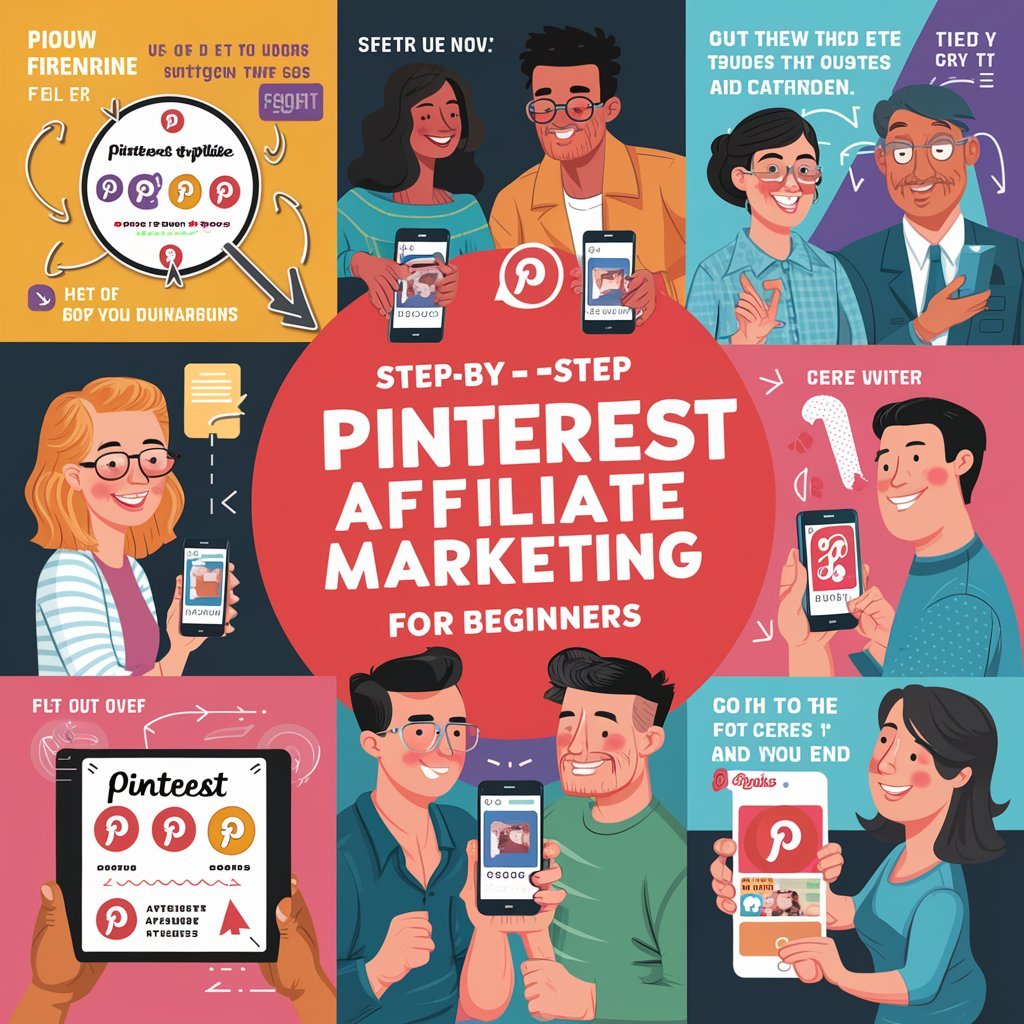Introduction:
One of the most successful online business models these days is affiliate marketing, which gains even more power when paired with Pinterest’s visual discovery engine to increase sales and revenue. We’ll dive into the nuances of Pinterest affiliate marketing in this in-depth guide, covering everything from account setup to putting cutting-edge techniques into practice for success.

Understanding Pinterest for Affiliate Marketing:
Pinterest is a visual search engine and discovery platform that helps users find ideas, answers, and inspiration. It’s not simply another social media site. Comprehending Pinterest user behaviour is essential to successful affiliate marketing. Users actively look for products, recipes, DIY projects, fashion inspiration, and much more, which creates the perfect atmosphere for affiliate product promotion.
Setup Your Pinterest Account for Affiliate Marketing:
Creating a business account is the first step in using Pinterest for affiliate marketing. A business account gives you access to useful marketing and analytics tools. Completing your profile with a professional profile photo, pertinent keywords, and an understandable and captivating bio can help you optimise your account. Make sure your blog or website, where you plan to promote affiliate products, is connected to your account.

Choosing the Right Affiliate Programs:
Choosing the appropriate affiliate networks is essential for success on Pinterest. Concentrate on forming alliances with businesses and brands that share the interests of your target market and niche. Look into affiliate networks that sell products related to your target market, such as Commission Junction, ShareASale, and Amazon Associates. Put a high value on reliable brands and high-quality products to keep your audience’s trust.
Creating Compelling Content:
Pinterest is all on visual material, therefore making interesting Pins is essential to increasing traffic and conversions. Create a content plan based on the interests of your target audience and your niche. Make visually appealing Pins that highlight important features, show off things in use, or provide answers to frequently asked issues. To draw Pinterest visitors in, utilise crisp visuals, high-quality photos, and succinct captions.

Optimizing Pins for Performance:
In order to maximise your Pins’ visibility and reach on Pinterest, optimisation is essential. To increase discoverability, include pertinent keywords in your board names, descriptions, and pin titles. To improve searchability and categorise your Pins, use insightful hashtags. To vary your material and draw in viewers, try out several Pin types, including normal Pins, carousel Pins, and video Pins.
Strategic Pinning and Scheduling:
When it comes to pinning on Pinterest, consistency is essential. Create a pinning schedule that corresponds with the peak engagement periods and activity levels of your audience. To stay consistent on Pinterest and automate your pinning process, use scheduling solutions such as Tailwind or the integrated scheduler on Pinterest. To add value and keep your audience interested, combine carefully chosen material with your affiliate Pins.
Analyzing Performance and Iterating Strategies:
Use Pinterest Analytics to track important metrics such as impressions, clicks, and conversions while keeping a regular eye on the performance of your pins. Examine which Pins are generating the most interaction and sales, and note any patterns or trends in the behaviour of your audience. To get the most out of your affiliate marketing endeavours, utilise these information to hone your content strategy, maximise your Pins, and try out new tactics.
Disclosure and Compliance:
To keep your audience’s confidence and credibility in affiliate marketing, transparency is crucial. Declare your affiliate affiliations in your Pin descriptions and images in a clear and conspicuous manner. To identify sponsored content and affiliate links, use hashtags like #ad or #affiliate. To guarantee compliance and prevent fines, familiarise yourself with Pinterest’s affiliate marketing rules and regulations.

Building Community and Engagement:
Focus on creating a community and encouraging interaction with your audience on Pinterest in addition to product promotion. Participate in discussion boards, reply to comments, and share insightful articles from other experts in your field to build user engagement. Gain a devoted following by offering practical advice, motivation, and suggestions that speak to the needs and interests of your readers.
Conclusion:
Affiliate marketing on Pinterest gives marketers a plethora of options to monetise their content and increase income. Pinterest may help you reach and engage your target audience and accomplish your affiliate marketing objectives if you grasp its dynamics, choose the best affiliate programmes, produce engaging content, and put these ideas into practice. To stay ahead of the curve in the ever-changing world of Pinterest affiliate marketing, keep yourself updated, adjust to platform changes, and continuously improve your strategy.



